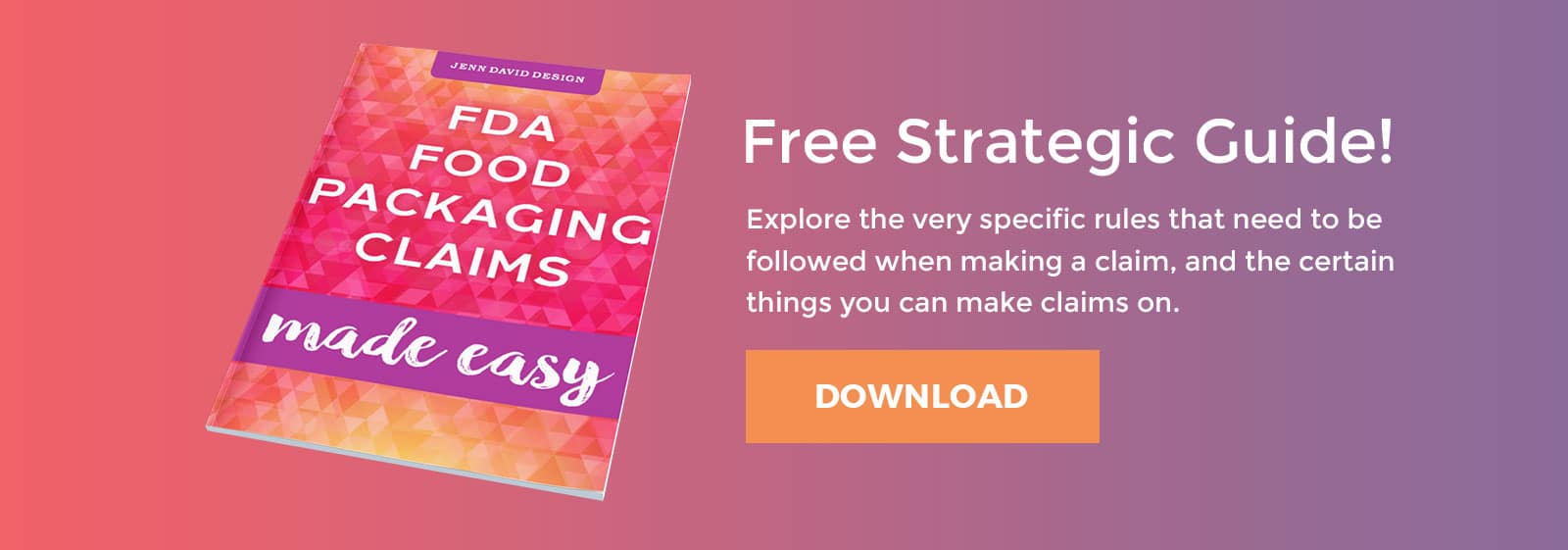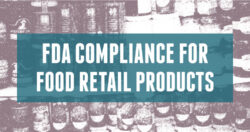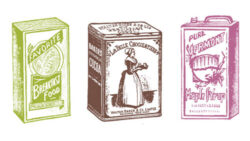As a specialist in food packaging design, I frequently get questions regarding labeling and compliance. The Country of Origin Labeling (COOL, a requirement of US Customs and Border Protection, CBP) can be particularly confusing, especially when you have different components coming from different countries.
In this article, I’m going to address a couple of common COOL scenarios to shed some light on the subject. For demonstration purposes I’m going to use example ingredients and countries.
In the first example, Cocoa is imported from Mexico but is sometimes imported from Chile instead. The Country of Origin Labeling requirement states that “Food labeling statements regarding geographical origin must not be false or misleading in any particular.” So it would be incorrect to state that the cocoa is a product of both Mexico and Chile on the label. You would need two labels in this case—one for each respective country of origin. One exception to this example is certain oils used in certain products.
In the second example, some spices are imported from India, but are blended in the USA with other spices imported from China to create a new spice blend, different from the individual imported spices. Country of origin statements are not currently required for individual ingredients in an end product if the product is substantially transformed during the blending/preparing process and is no longer identifiable as the product itself. If the end product is mixed/created/blended and substantially transformed in the USA then it is a product of the USA even if all its individual ingredients are imported from other countries. (If you’re importing these individual ingredients though, their own packaging needs to state the country of origin.)
It is not required to state when a food is a product of the USA, but many brands choose to do so. Transparency in the food manufacturing process is important to consumers, and many consumers prefer to buy products made in the USA, so this helps build trust and can be a selling point. It can be a bit misleading to the consumer however, because “Product of the USA” or “Made in the USA” does not necessarily mean all or even any of the product’s ingredients come from the USA (for products with multiple ingredients), but rather that the making or blending of the product happens in the USA.
It is not necessary to state the origin of the food container itself. For example, if a jar is imported from China but the product is made in the USA or elsewhere, it is not necessary to state that the container comes from China.
Here are some direct links to the source information:
FDA Country of Origin Labeling
Compliance Policy Guides for Country of Origin Labeling
COOL FAQs
This article is provided for information purposes only and does not constitute professional advice nor does it substitute for your reading and reviewing the applicable language from the FDA, CBP or COOL regulations or obtaining advice from the appropriate professional regarding what is and is not required by the FDA, CBP or COOL regulations. This article is not intended to provide advice and direction on how to comply with the FDA, CPB or COOL requirements. The reader of this article is urged to read the FDA, CPB and COOL regulations and/or obtain the appropriate professional advice on the FDA, CPB and COOL regulations. No professional, business or other advisory or economic relationship is created herein, and in some states these materials may be considered advertising.






Hi Jenn,
Your article is very helpful and I am interested in knowing how do you work, we are launching a new brand of chocolate made in Guatemala. Could you provide a quote for us, and we look forward to your reply. Thank you!
Hi Michelle,
Just sent you an email with more info!
Jenn,
Great summary of Country of Origin Food Labeling from the monster CFR code I was curious of the source for the penultimate statement of “Note that it is not required to state the food container’s country of origin”; as I’ve seen CofO labels on food containers indicating that the packaging was from CountryX (typically China) – knowing that the product was made in the US. Again – great article.
J
Hi Jason,
Great point, and I’m glad you brought that up!
I realize I need to clarify that statement. What was intended was that it is not required to state the container’s country of origin on the food label itself, but if it is an imported container then the container does need to indicate somewhere on it where it was made. I’ve updated the blog post to reflect that clarification.[UPDATE 3/23/15: Upon further research we have concluded that no COOL is required for the container itself. The article has been updated to reflect this information.]
Thanks!
Jenn
Hi Jason,
Just to update you that upon further research, we believe that there is no COOL requirement for the container itself. The article has been updated with this information.
Best,
Jenn
Hi Jenn,
If the end product is mixed/created/blended in the US then it is a product of the US even if all its individual ingredients are imported from other countries…. Won’t the origin in this case be based on a tariff classifications change or regional value? or does this apply only to NAFTA?
What if Brazilnut from Bolivia and Brazilnut from Peru are mixed and packed in US and exported to Europe? What is country of origin of the mixed product in this case?
Hi Ardian,
Our area of professional expertise does not cover NAFTA, tariff classifications, regional value or European imported food regulations. As far as we know, this does not come into play in US retail food labeling.
Regarding the brazil nuts question, since the nuts are both imported and the end product is still identifiable as brazil nuts, you would need to state the countries of origin on the food label.
Best,
Jenn
We are located in the US and planning to make a tuna salad, the tuna is from either Thailand or the Philippines could we label it product of USA since we are mixing it with other items to make it into a salad?
Hi Stephanie,
Based on what you told me it sounds like you can label this as a product of USA because it is mixed together in the USA into a salad and therefore becomes a processed food. Here is source information that may be of further help to you:
https://www.ams.usda.gov/sites/default/files/media/COOL%20Brochure%20RETAILER%20Final.pdf
Best,
Jenn
Thank you for the very informative article. Question: Am I correct in understanding the COO is required if the raw materials, (freeze dried and dehydrated fruits and vegetables) imported from various countries and packaged in their original imported form by a US company? A “manufactured by” label is not sufficent with out a COO?
Thank you!
Lynn
Hi Lynn,
That’s correct, you would need the “manufactured by” statement and the country of origin statement.
Best,
Jenn
Excellent piece. I would like to know where the ingredients come from, what country. I wonder if that could be added to the label. Most processed foods have ingredients that aren’t from or made in America.
Hi Michael,
There is currently no general regulation to specify where ingredients come from if the end product country of origin is different from those of the ingredients. However, we are seeing more and more brands highlight the origins of ingredients they feel proud of, for transparency and authenticity.